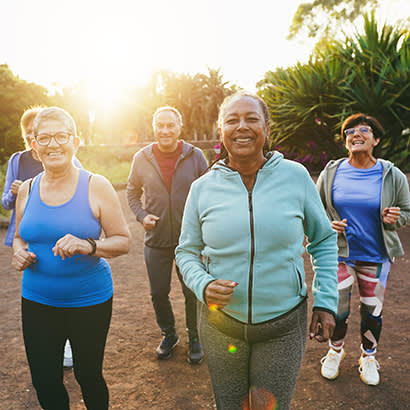
For an enhanced digital experience, read this story in the ezine.
Parks and recreation is for all people at every stage of life. In 2022, baby boomers and older generations (characterized as those born before 1965) accounted for 26 percent of the U.S. population, while Generation X (those born between 1965 and 1980) made up around 20 percent. These large segments of the population give parks and recreation a unique opportunity to serve and provide facilities, programming and other critical resources that support the lifestyle and diverse needs of these residents. NRPA recently released a report, titled Supporting Older Adults Through Parks and Recreation, that highlights how local park and recreation agencies and their staff serve older adults. The report touches on the facilities, services, outreach, programming and challenges found when providing accessible and affordable evidence-based programs and safe, inclusive environments to aging adults.
Ninety-two percent of park and recreation agencies offer older adult-related resources and programs. The most widely offered activities include exercise classes (89 percent), sports and games (86 percent), arts and crafts classes (73 percent), and volunteer opportunities (73 percent). Other popular programs include special events and festivals, field trips, cultural enrichment opportunities, social clubs, and organized group outdoor recreation.
Nearly every park and recreation agency indicated promoting social connection and addressing social isolation as top benefits of older adult programming. One avenue agencies are pursuing that has proven to be very beneficial in encouraging social connection is intergenerational programming. These opportunities allow for children and older adults to interact, bond and exchange knowledge. Nearly one-third of agencies offer this type of programming. The most common intergenerational activities are reading groups, arts and crafts, gardening, food and cooking classes, and mentoring opportunities.
Evidence-based programs have also been highly beneficial for the well-being of older adults. Classes like SilverSneakers® and Tai Chi encourage daily movement, improve balance, provide opportunities to socialize, and provide physical and mental health benefits. This could not be achieved without a variety of facilities. More than half of agencies deliver programming at recreation centers, parks, trails and greenways, senior centers, and community centers.
Partnering with other community organizations helps agencies meet the increased demand for older adult activities and programs. The most common partner organizations are senior living housing providers (74 percent), area-wide agencies on aging (71 percent), libraries (70 percent), faith-based organizations (64 percent) and local hospitals/healthcare providers (56 percent). These partnerships allow agencies to access other facilities, reach more users and provide unique programs that appeal to the older adult population.
The vast majority of park and recreation agencies offering older adult programming have seen an increase in participation post-coronavirus (COVID-19) pandemic. To accommodate this increase in older adult participants, 62 percent of agencies have added additional programs and offerings compared to 2019. And staffing for older adult programs is the same as in 2019 for 56 percent of agencies, while 31 percent have increased their staff in this certain area.
Park and recreation agencies provide amazing opportunities for older adults, but it does not always come easily. Ninety-four percent of agencies indicate they have challenges in bringing older adult programming to their residents. Aside from funding and staffing, facility-space shortages, lack of public awareness and engaging older adults from diverse communities are the biggest challenges.
Park and recreation agencies implement a range of special efforts to reach underrepresented groups in the older adult community. Common methods include working with leaders from local underrepresented groups, offering low-cost programs for low-income residents, hosting language classes, providing sites for nutrition programs, offering transportation for people with disabilities and more. Parks and recreation strives to be a welcoming, safe place for individuals of every race, identity, ability and age.
Melissa May is Senior Research Manager at NRPA. Allie Ziegler is Research Assistant at NRPA.


